#NatureZen: Thistle Defense
words and photos by Melissa McMasters
Today, we’re focusing on a plant that gets a bad rap. Thistles are a plant in the sunflower family with feathery, puffball-shaped flowers in varying shades of magenta. They set a deep taproot and have hairy, sometimes prickly stems. Several European species have escaped into the United States and, with fewer natural predators, have become noxious weeds. They’re difficult to control because the spiny stems make them hard to pull, and some species spread via their underground roots.
It’s a familiar story. But in the case of thistles, the problem is twofold: the invasive species themselves, which disturb agricultural lands and outcompete plants that should be growing in the area, and the psychological toll that the invasives have taken. Even though there are 58 species of thistle native to North America, many of them look very similar to each other and to the European species that are so difficult to control. Many land managers have found it easier to simply spray herbicide on all varieties of thistle, which is a major loss for the many pollinators who adore it, like this pipevine swallowtail and Eastern tiger swallowtail (and their bee friend) on field thistle at Shelby Farms Park.
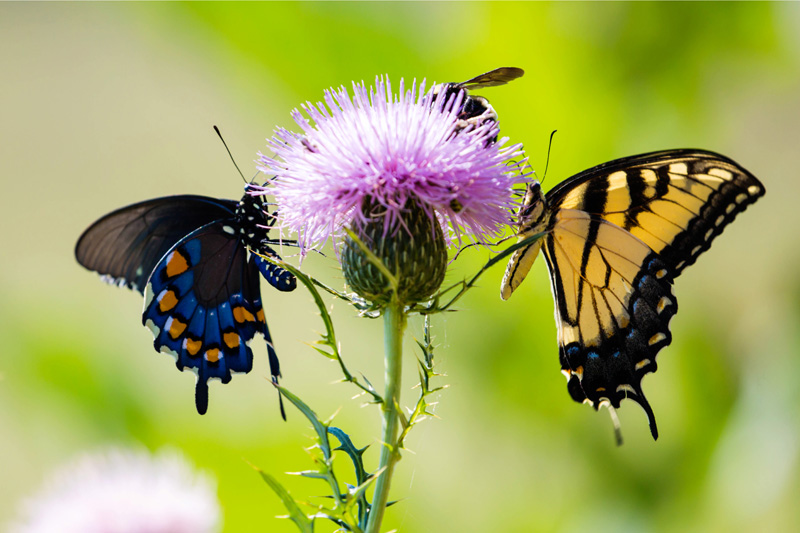
Looking to distinguish the native from the invasive? A good way to tell the difference is that native thistle leaves typically have whitish, woolly undersides, while the invasive thistle leaves are green on both the top and bottom.
As a naturalist, I love coming across a patch of thistle because I know I’m going to see so many amazing little insects. We don’t have thistle in Overton Park because the park lacks open grassland and meadow habitats, but you can find it in other parks around town.
It’s amazing the array of insects you’ll find on thistle. Butterflies, of course, love it. Here’s a Southern cloudywing on bristle thistle in the Florida panhandle. Bristle thistle is so spiny that the botanist who described it, Thomas Nuttall, called it “one of the most terribly armed plants in the genus.”
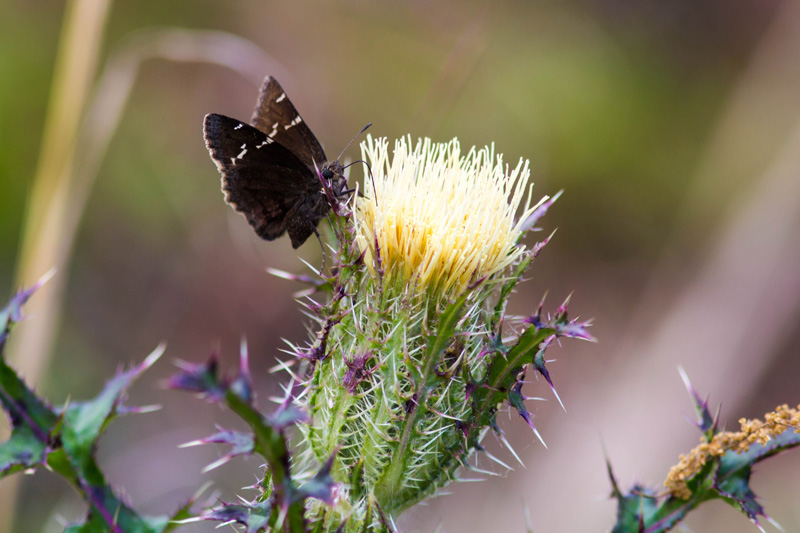
This is a tiny Celia’s roadside-skipper on Texas thistle in the Santa Ana National Wildlife Refuge at the Texas/Mexico border. Every thistle plant I passed had a small brown butterfly on it of some sort. Butterflies are particularly attracted to pink and yellow flowers, perhaps because they stand out so well visually in the landscape. Brightly colored flowers are to butterflies like a big neon sign over a roadside restaurant, letting us know we can pause on our journey and find something good to eat.
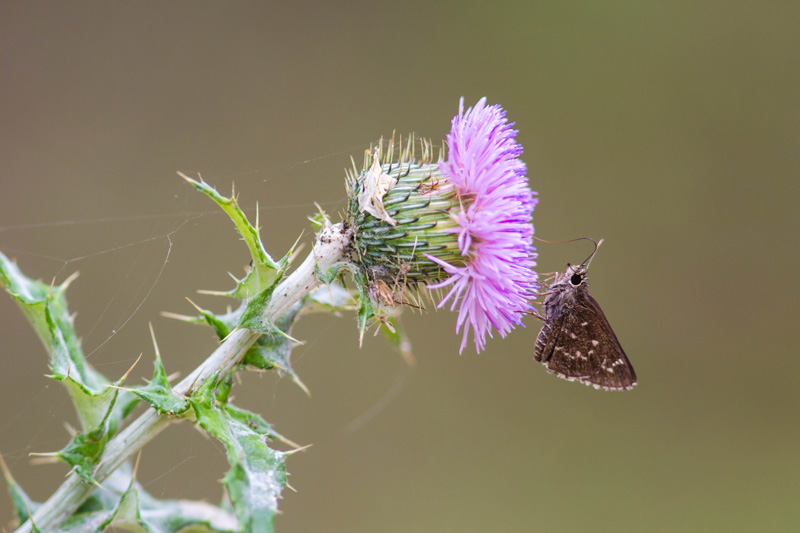
Here’s a hummingbird clearwing moth enjoying the nectar of field thistle in Woodbridge, Virginia.

Sometimes thistles are just a soft place to take a rest, like this creeping thistle in Rocky Mountain National Park, which is hosting a California cuckoo bee. Funny that a plant we think of as sharp and poky is another creature’s warm bed!
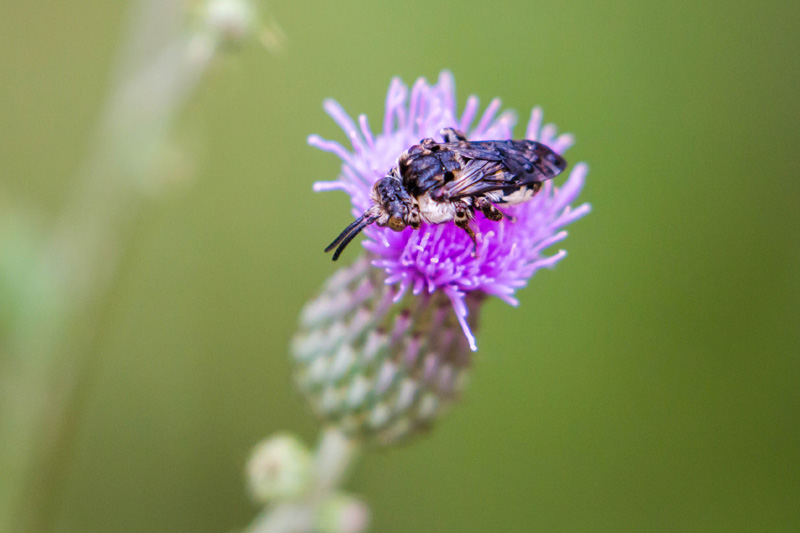
Elsewhere in this patch of creeping thistle, I found some tiny flower beetles. A thistle can feed many insects at once because its flower head is made up of many tiny tube-shaped flowers. It’s one big pink buffet!
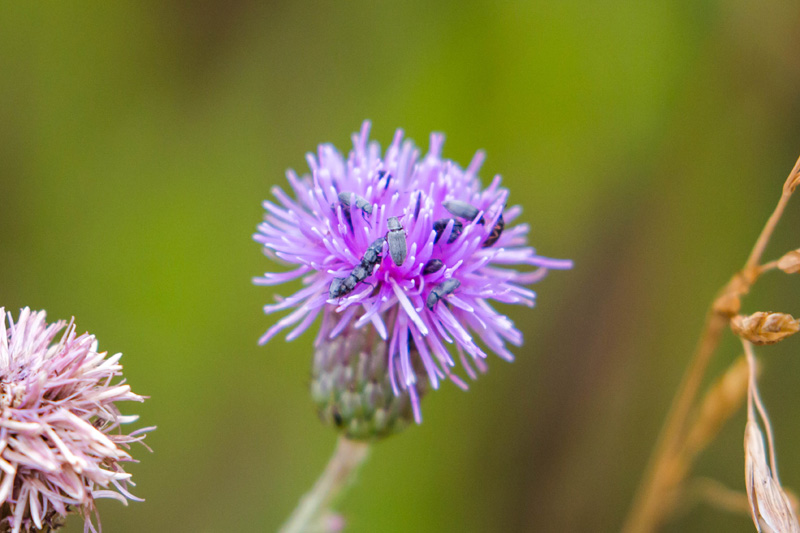
With so many pollinators happening by, thistle provides a good spot for spiders to lurk and catch their next meal. This field thistle holds a green lynx spider, which I’ve frequently spied with honeybees in their webs.
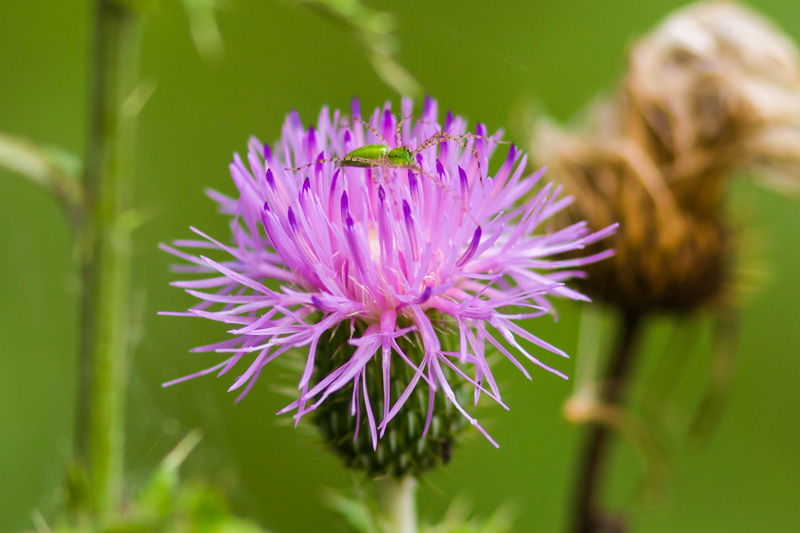
As the flowers fade, a new set of insects arrives. You might find a whole crew of Eastern leaf-footed bugs occupying a single spent flower. Here you can see two adults on the left and two nymphs on the right.
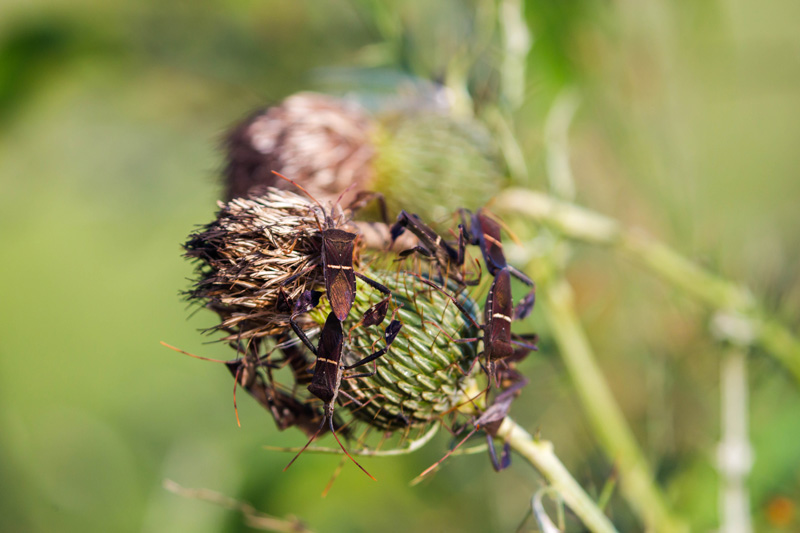
A differential grasshopper blends right in with the color of the flower bracts (the leaf-like structure out of which the flower arises).
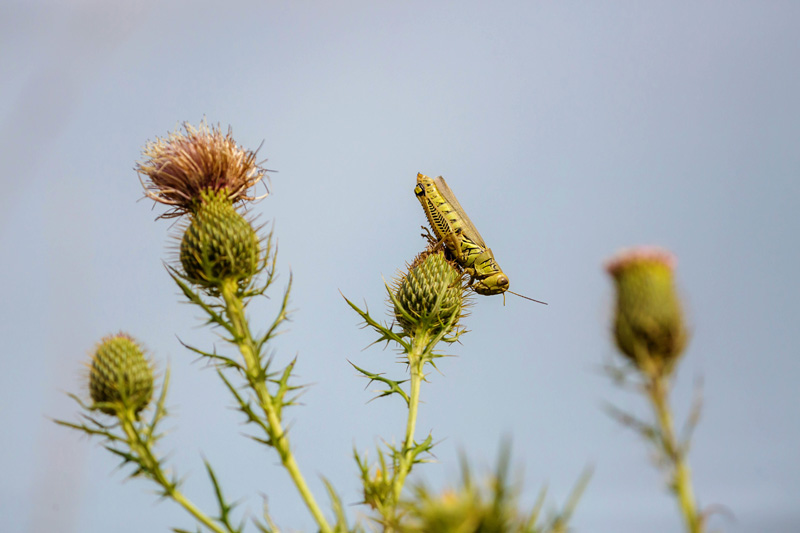
Finally, the thistle is so beloved by the American goldfinch that this bird is sometimes referred to as the “thistle bird.” Not only do they love to pull the fluffy fibers from inside thistle flowers to make their nests, but they are among the few birds to eat thistle seeds. Goldfinches eat seeds and not much else, unlike most other songbirds, which also eat insects and fruits.
I tried to find a photo of a goldfinch on some thistle, but as I’ve learned many times: you can’t make a bird pose on command. Here’s one on another plant in the sunflower family. Close enough!
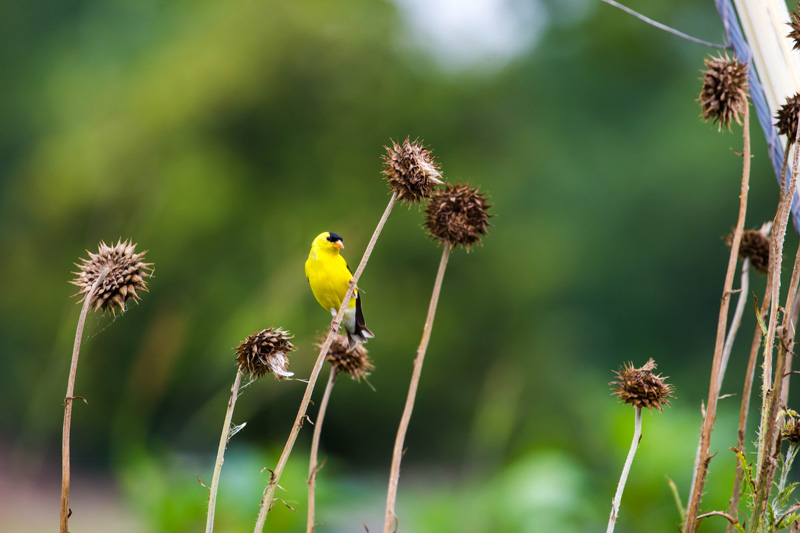
I hope you’ve enjoyed meeting just a few of the creatures that love thistle. We’ve still got a short time left in its blooming season, so head out and see if you can spot some tall pink plants by a roadside!



